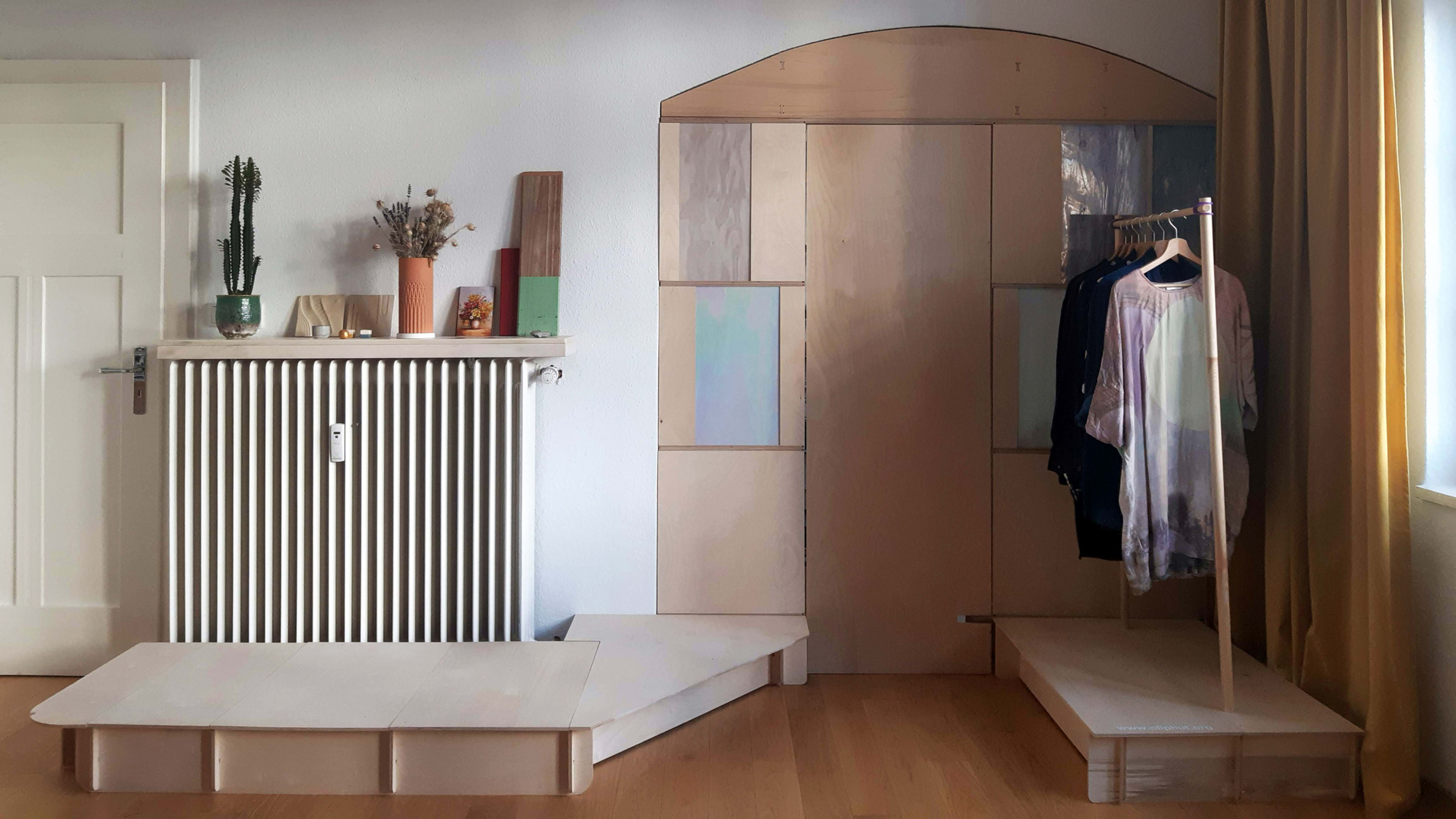There are only so many ways to build a piece of furniture, and almost all of them—save for Japanese wood joinery or this highly innovative shape-shifting chair—involve some form of nails, screws, glue, or electric tools that make the building process virtually irreversible. But for the past five years, a German design studio has been researching a radically different way to join two pieces of wood by clipping them together, a bit like the chin strap on a helmet.
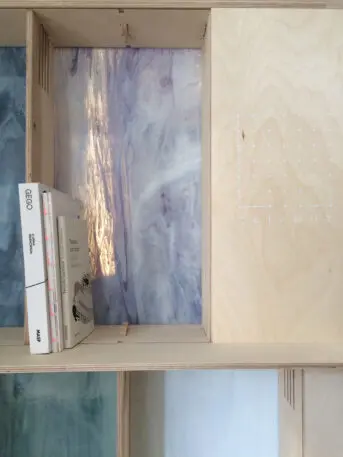
The outcome of that research was recently showcased during Dutch Design Week in the Netherlands city of Eindhoven, where ClipHut, as the studio is called, displayed a wooden hut and a freestanding bar, both of which were built using the company’s wooden clip system.
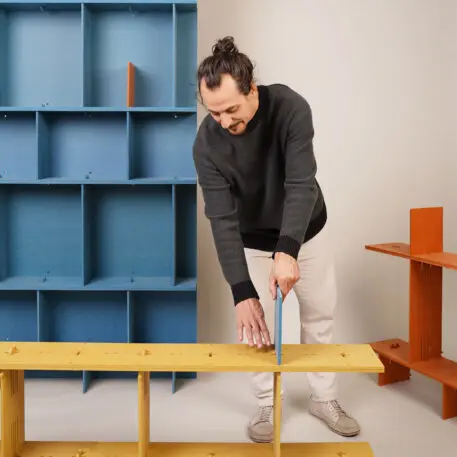
The idea for ClipHut was born when Thomaz Vieira, a Brazilian architect specializing in digital fabrication at OWL University of Applied Sciences and Arts, was tasked with developing a wood construction system from the bottom up—starting with the joint. The goal of the exercise was to design a system that organizations could use to build more permanent refugee shelters during Germany’s refugee crisis in 2015. Vieira wanted it to be quick and easy, without compromising on structural integrity.
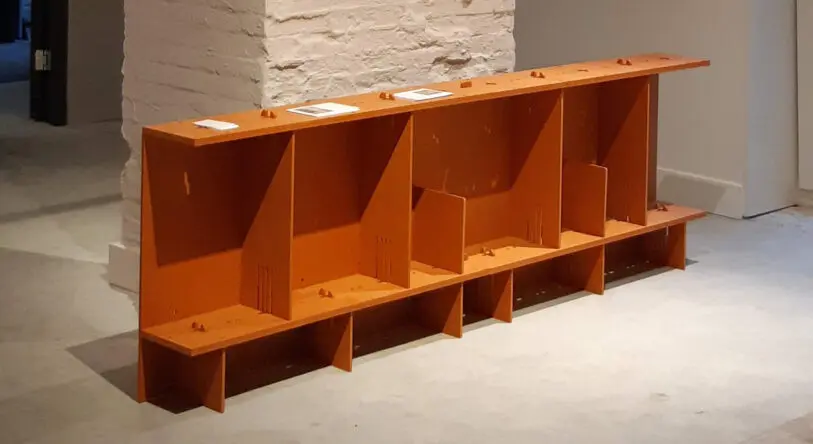
That’s where the clip mechanism comes into play. The system consists of horizontal and vertical planks made of oriented strand board, or OSB, a widely used engineered wood. The surface of the horizontal planks is punctuated with evenly spaced holes, while the edge of the vertical planks is shaped in the form of a clip; both planks can interlock at various points, depending on the kind of shape you want to build. The only tools you need to assemble two pieces are your hands and a rubber hammer.
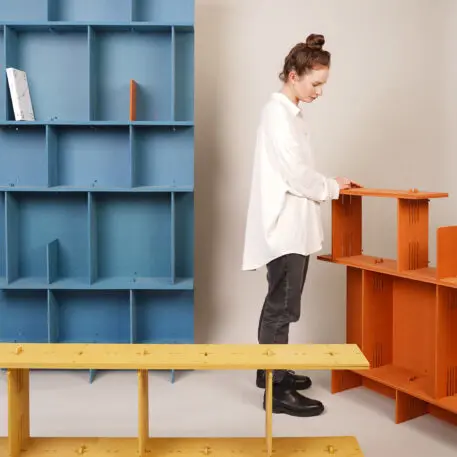
Back in 2016, Vieira put the concept to the test by building a prototype shelter about the size of a one-car garage. Since then, he has built more than 100 prototypes to get the mechanism right. The architects haven’t tested how the structure would perform with a load-bearing floor yet, so for now, Vieira says the concept is limited to the scale of a single-story office shed, or refugee shelters for nongovernmental organizations that are interested in partnering with ClipHut. But the company is starting even smaller than that, with a focus on furniture sets.
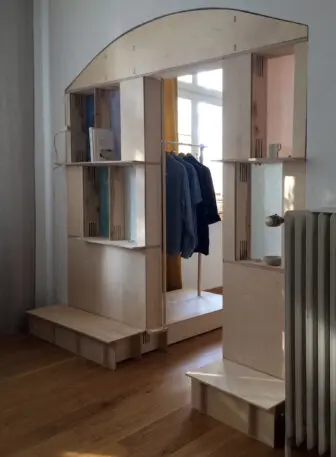
Within the next few months, ClipHut is launching a furniture kit that will let you design and build a variety of furniture pieces from the same set. According to Mona Makebrandt, who leads interior projects at ClipHut, one kit could be used to build a range of items like a bookshelf, a TV stand, or a corner unit.
An instruction manual will guide users through various options, but as Makebrandt points out, “If you play with it, you’ll figure out different shapes.” This DIY approach is at the core of ClipHut’s value proposition. Vieira and Makebrandt even built their own custom room divider at home.
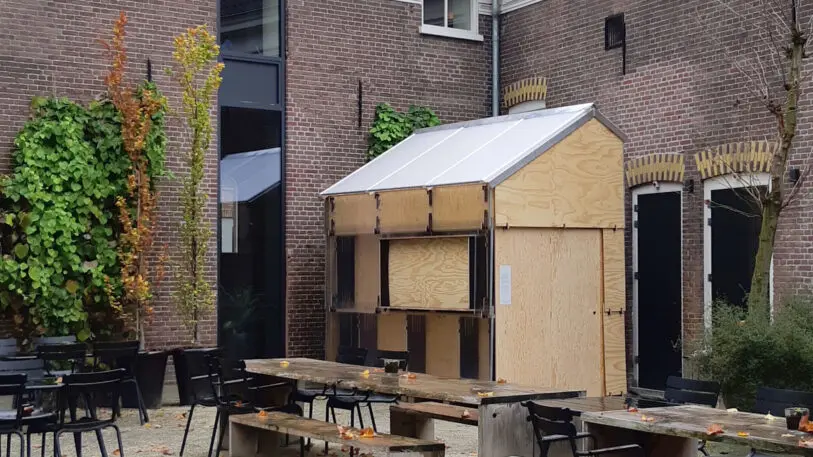
Ultimately, ClipHut is an intriguing reinterpretation of flat-pack furniture, which isn’t durable and is often difficult to assemble. The company’s clip mechanism makes it user-friendly and accessible to anyone who can hold a rubber hammer. It also means that a piece of furniture can be endlessly modular, and as a result, last longer because it can be adapted. “It’s like a Lego you can just put together,” Vieira says.
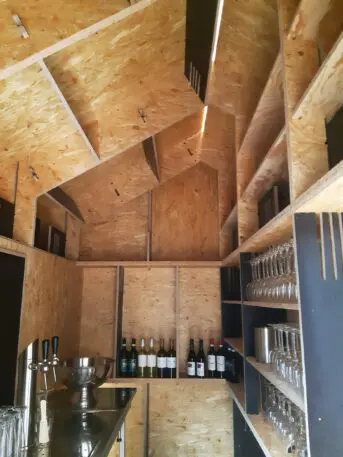
The most impact, of course, may come once the company figures out how to go bigger. The architects plan to unveil a web tool within a year that will let you design your own house and automatically generate all the parts you need to “clip” it together (with room for insulation, plumbing, and electricity). Vieira says the tool will be easy enough for laypeople to use to design their own house, while the mechanism will make it easy for them to go ahead and build their own house, too. The million-dollar question is: Will they want to?
Recognize your brand’s excellence by applying to this year’s Brands That Matter Awards before the final deadline, June 7.
Sign up for Brands That Matter notifications here.
